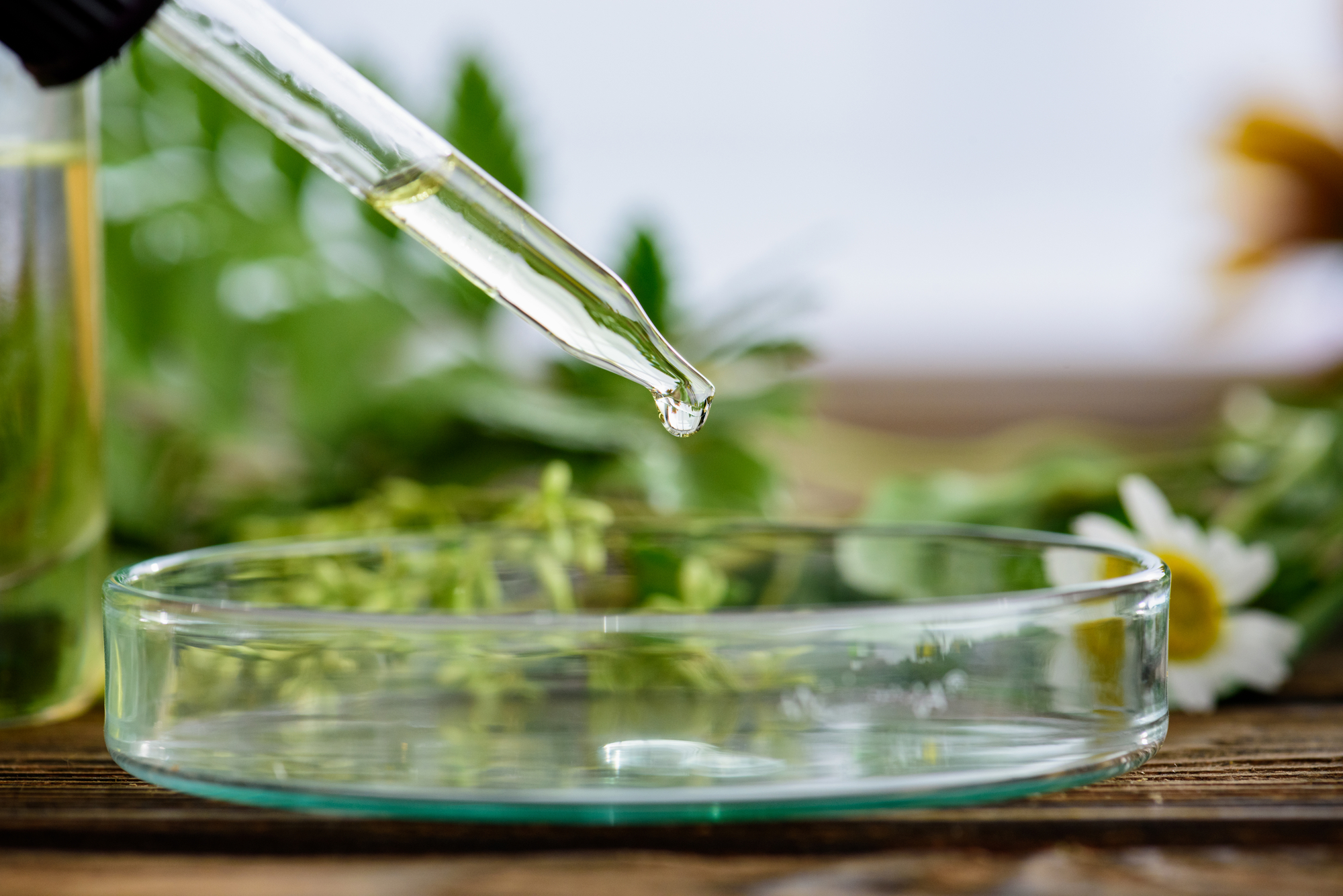Chemical Family: Monoterpenes

Monoterpenes
In an earlier lesson, terpene was defined as a molecule that is made up of carbon and hydrogen only. One of the chemical families with this type of structure is monoterpenes. Because they are made up of 10 carbons with a varying number of hydrogens and are relatively small containing one or more double bonds, they are fairly unstable and are prone to oxidation. Typically, you will find essential oils that are rich in monoterpenes as top or middle notes with a tendency to evaporate quickly. However, because of their size, they do have the ability to penetrate the skin easily. Citrus essential oils such as lemon, orange, and grapefruit contain over 90% monoterpenes. Hence, you see why essential oils high in monoterpenes have a shorter shelf life (1 to 3 years).
Isoprene units are simply branched five-carbon units. One isoprene unit is called a “hemiterpene” which means “half.” Two isoprene units form a monoterpene, which means “one.” The chemical components of this family are grouped together based on specific similarities in their molecular structure.
Monoterpenes are composed of two isoprene units of five carbon atoms each, totaling ten with at least one double bond. As you can see below in the component chart, names of monoterpenes molecules end in “ene.”
Pictured above and below are some examples of the chemical components in the monoterpene family.
 Monoterpenes Component Family
Monoterpenes Component Family
In the Monoterpene chemical family you will find components such as those listed below that belong to it. Essential oils such as Lemon is made up of primarily monoterpenes, while other essential oils may contain one or more chemical families.
| Camphene | antioxidant, mucolytic |
| Carene | anti-inflammatory, inhibits acetylcholinesterase, mucolytic, prevents bone loss |
| Cymene | analgesic, antibacterial, antiviral |
| Limonene | activates white blood cells, analgesic, anti-inflammatory, antibacterial, anti-obesity, antioxidant, anti-tumoral, antiulcerogenic, immunostimulant, antiviral, skin penetration enhancer |
| Myrcene | analgesic, anti-inflammatory, sedative |
| Phellandrene (a) | antibacterial, antispasmodic |
| Phellandrene (b) | anti-fungal (candida) |
| Pinene (a) | anti-inflammatory, antibacterial, anti-fungal (candida), antispasmodic, antiviral, prevents bone loss |
| Pinene (b) | anti-inflammatory, antioxidant, antispasmodic, prevents bone loss |
| Terpinene | antibacterial, antioxidant, antispasmodic, antiviral, kills head lice |
| Terpinolene | antibacterial, anti-fungal (candida), antioxidant, antispasmodic, antiviral, sedative |
Oils that have a Significant Percentage of Monoterpenes
- Black Pepper (Piper nigrum)
- Bergamot (Citrus bergamia)
- Cypress (Cupressus sempervirens)
- Frankincense (Boswellia carterii)
- Grapefruit (Citrus paradisi)
- Juniper Berry (Juniperus communis)
- Laurel Leaf (Laurus nobilis)
- Lemon (Citrus limon)
- Neroli Citrus (aurantium var. amara)
- Nutmeg (Myristica fragrans)
- Opopanax (Commiphora guidotti)
- Orange (Citrus sinensis)
- Ravintsara (Cinnamomum camphora CT. 1, 8 cineole)
- Rosemary (Rosmarinus officinalis CT camphor 1, 8)
- Siberian Fir (Abies sibirica)
- Sweet Marjoram (Origanum marjorana)
- Tea Tree (Melaleuca alternifolia)
- Thyme CT (linalol Thymus vulgaris CT linalol)
 Monoterpenes’ Therapeutic Properties
Monoterpenes’ Therapeutic Properties
- Antiseptic – great for cuts
- Analgesic – relieves pain
- Rubifacient – increases blood circulation
- Decongestant – relieves respiratory congestion
- Antibacterial (some also antiviral)
- Kill airborne germs
- Skin-enhancers – great for getting deep into sore muscles, tendons, and ligaments
Safety Considerations
It is important to store this particular group of oils in a dark, cool place away from heat and oxygen. This is because essential oils high in monoterpenes that have oxidized can cause skin irritation or sensitization. In addition, monoterpenes are not water-soluble and should not be used in the bath unless well-diluted with a carrier oil or base. Limonene, which is present in all citrus oils has been researched as a monoterpene as a potential risk as an irritant or allergen when oxidized.


